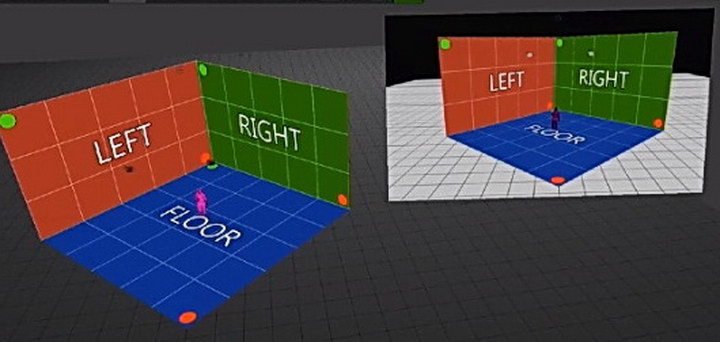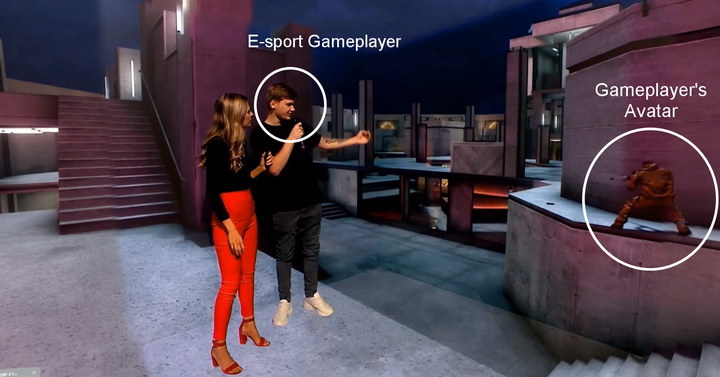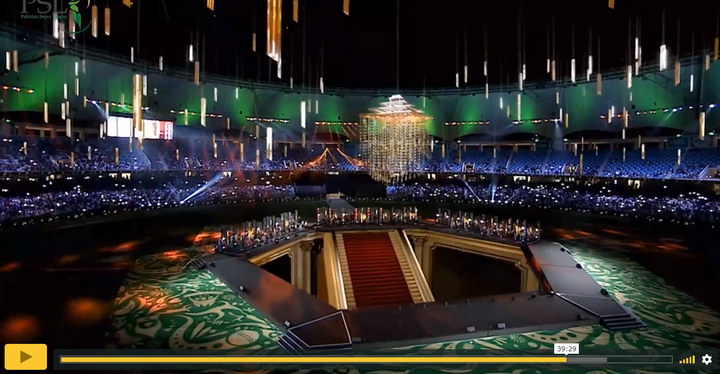In yesterday’s DD, (Corporate Events in the Days of Coronavirus, Part 1: Event Production) I discussed the production of a live online event that largely duplicates the experience of an in-person event. In today’s DD I will discuss adding Extended Reality (XR) content to an online meeting using technology provided by the British Pro AV company Hawthorn, now a wholly-owned subsidiary of PSAV.

 Global Virtual Events Day was produced by PSAV on April 2nd. (Credit: PSAV)
Global Virtual Events Day was produced by PSAV on April 2nd. (Credit: PSAV)
Hawthorn is mostly an equipment rental company that also develops the technology for events that can use its equipment. PSAV and its subsidiaries are an event production company, doing the same sort of work as Animatic Media.
Besides in-person events, PSAV is also a player in the virtual event market, as is Animatic Media, and it produced on April 2nd Global Virtual Events Day. This was a day-long webinar featuring a team of experts from PSAV and its subsidiaries who covered “everything you need to know to plan and produce a world-class virtual event.” Everything you need to know? Well, maybe, but certainly a good starting point. If you are interested in having your organization present a virtual event, all the sessions from Global Virtual Events day, a total of 6 hours of content, are available for viewing for free, with registration. Sessions available for viewing include:
- Introduction – How to Successfully Transition Your Event from Live to Virtual (20 Minutes)
- From Live to Virtual: Designing an Optimal Experience (45 Minutes)
- Designing & Delivering Engaging Virtual Content (45 Minutes)
- A Solid Foundation: Technology Basics for Virtual Events (40 Minutes)
- Live from the Living Room: Connecting and Presenting Virtually (40 Minutes)
- Break the Language Barrier: Serving Multilingual Audiences (39 Minutes)
- Unlocking Opportunities: Create Value with Virtual Event Sponsorships (46 minutes)
- How it All Comes Together: 2019 SALT Conference Event Case Study (34 Minutes)
- Virtual Events, “In Real Life” (48 Minutes)
 Three LED Videowalls are used in Hawthorn’s XR technology. (Credit: Hawthorn)
Three LED Videowalls are used in Hawthorn’s XR technology. (Credit: Hawthorn)
Peter Harding, Head of Creative Technical at Hawthorn, gave a presentation on Hawthorn’s XR technology, very similar to his presentation for the Avixa webinar, as part of the last virtual session, Virtual Events, “In Real Life”. His portion of the talk begins at about the 25 minute point.
XR content is common in live or streaming video in today’s world. Two examples Harding gave were on election night with commentators giving updates on returns and after soccer matches (Hawthorn and Harding are both English), going into details what the players did right or wrong. Harding says that, currently, much of this XR content is produced using green screen technology. Green screen techniques require careful rehearsal and planning.
For example, no clothing can be worn that is the same color as the green screen but what if the soccer uniform is that color? Perhaps the most serious limitation is that the commentator cannot see the content that he is pointing to and explaining. While there are work-arounds for the problems with green screens, these work-arounds are not generally appropriate for many corporate and other events where there is less rehearsal beforehand.
With Hawthorn’s corner approach, the problems with green screen technology mostly go away. The content to be shown and explained by the commentator is shown on the screens and the commentator, standing or sitting in the corner, can see the content. This allows him to spontaneously point to something that he wants to bring to the viewer’s attention. In this system, Hawthorn tracks the video camera and a game engine, such as Notch, Unreal or Unity, adjusts the displayed virtual content in real-time to adjust for the camera perspective. If there is a studio audience, they can also see both the commentators and the content they are commenting on, although the perspective may be wrong from the audience location.
 E-sports commentator with a gameplayer who is explaining his winning moves. (Credit: Hawthorn, Labeled by M. Brennesholtz)
E-sports commentator with a gameplayer who is explaining his winning moves. (Credit: Hawthorn, Labeled by M. Brennesholtz)
In the image, the only things you see that are real are the commentator and the e-sports gameplayer, the rest are displayed, with the correct perspective for the current camera position, using Hawthorn technology on the three LED screens. The gameplayer can view the recording of his game and show his winning moves and explain how and why he did them.
 Hawthorn XR technology at the Pakistan Super League opening ceremony. (Credit: Hawthorn)
Hawthorn XR technology at the Pakistan Super League opening ceremony. (Credit: Hawthorn)
Hawthorn XR technology can also be used a mega-events as well as corporate events. Two examples Harding gave were a tour by the Korean boy band BTS and at the opening ceremony for the Pakistan Super League (PSL) cricket championships. At the PSL opening ceremony, there were six tracked cameras, including a spider camera, shooting the ceremony and the game engines had to generate the correct perspective for the AR content for each tracked camera. When the live event TV director switched cameras, the version of the XR content with the correct perspective was instantly available.
In this case, the live audience sees only the real stage, which was plain and almost empty except for the performers. In the image above, the staircase, the chandelier, the floating candles and the carpet on the playing field are all virtual. If the 100,000 or so people in the stadium want to see them, they have to look not at the stage but at the large LED displays in the stadium. For this event, Disguise XR created about 50 minutes of XR content.
A mega-event, or even an ordinary corporate event that wants to include XR, one needs to plan in advance. Key take-aways from Harding’s presentation were:
- Start designing and planning early.
- Engage a reliable XR partner, such as Disguise XR.
- XR Content requires special, experienced designers
- Content creation takes time (see point 1!)
- Adding eXtended Reality creates cutting edge immersive engagement for your streaming viewers.
In August, SID is due to run Display Week, and said that it would be in San Jose. However, it seems inevitable that at least part of that event will be available solely or additionally by virtual means. I hope Palisades Convention Management (which runs a lot of Display Week) and the SID get an experienced virtual event planner to help them: it doesn’t sound easy to me! – Matthew Brennesholtz

